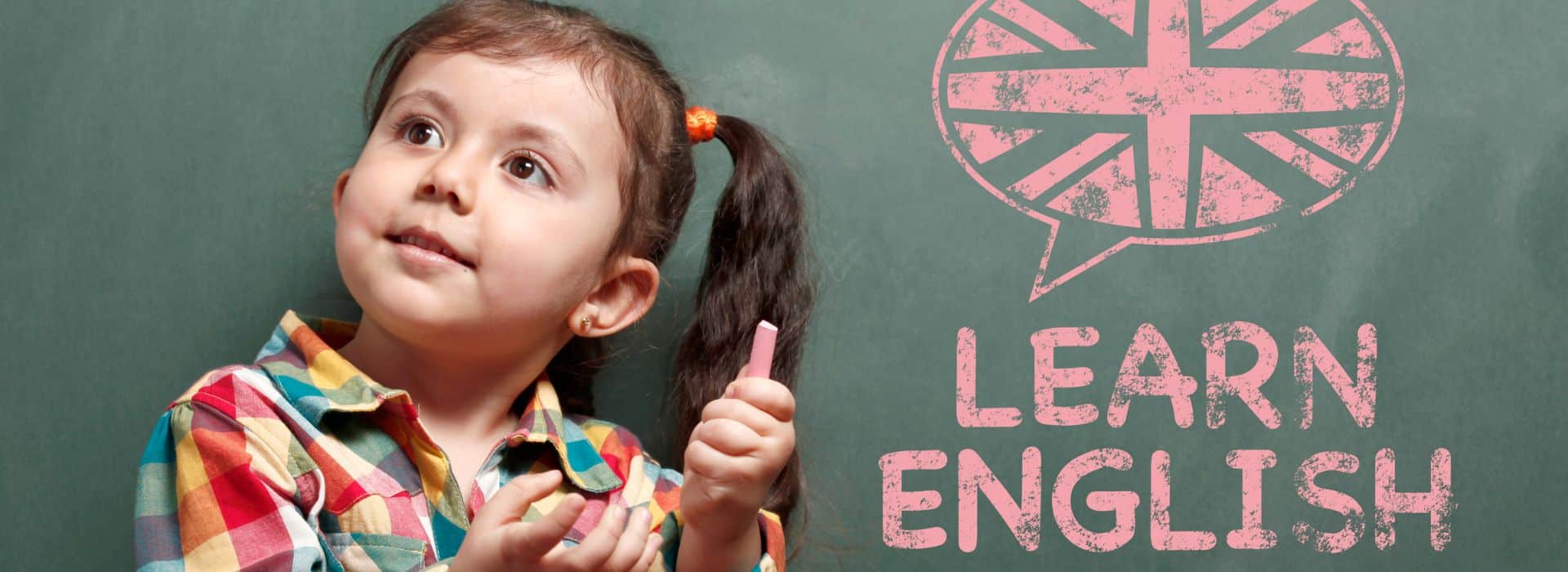Language features are your functional skills and your proficiency in English depends on them. Unravel the secrets of getting better grades in English and to become an effective communicator.
Have you ever read an English article or read a social media post and said,” Wow, that was such a fantastic piece of writing!” Or wondered why you aren’t scoring well in your English language papers? Chances are, you aren’t employing the language features appropriately. If you do not understand the language features, the text structures and how to engage with them, you have come to the right blog!

What are Language Features in English?
A word or expression that adds meaning to your language, improves its quality or enhances your expression is called a language feature. It can be a noun, an adjective, a figure of speech, a particular word or a sentence structure. The choice of a language expression depends on the type of text you are writing, the audience you are writing it for, the topic, etc.
There are many language features in the English language; necessary functional skills. But, wait! Before you think you can’t cope with a long list of them, let us assure you that most of these features you are already aware of, and many are easy to use.
Diving deep into the world of ‘language features examples’ is like unlocking a treasure chest of linguistic gems. Beyond basic grammar and vocabulary lies a universe where words play, dance, and sing! For example, onomatopoeia makes our language echo with sounds, turning ‘buzz’ and ‘bang’ into audible illustrations. Alliteration, another fun example, gives us catchy phrases like ‘Peter Piper picked’, making them roll off the tongue effortlessly. These ‘language features examples’ aren’t mere decorative tools; they breathe life and rhythm into our communications. Whether you’re a student penning an essay or just spinning a yarn with friends, sprinkling these features can make your narrative truly unforgettable.
The List of Language Features
Language is a vast subject. Also, it keeps evolving. The list of language features can be a bit overwhelming, so the most appropriate ones for you have been discussed by Edulyte’s experts here. These include:
Language Features, their effects and examples
Allegory
When an event or a character in a poem, play or story represents an idea, it is called an allegory. Instead of giving the meaning clearly, the writer uses allegory to describe the thought, and the readers are to interpret it. Such a use of language features adds value to the emotion or thought.
A famous example of allegory in literature is George Orwell’s Animal Farm. A group of farm animals kick out the humans to run the farm themselves. But the underlying story is about the Russian Revolution; the pigs on the farm who take control represent Communist leaders like Stalin, Lenin, and the dogs who help the pigs represent the KGB.
Alliteration
Lady Larson liked lizards!
Interestingly, in the line above, all the words begin with the same sound, the sound of “l”. And this is what alliteration is, words placed together, starting with the same sounds. The poets adore it, and the writers swear by it. Alliteration gives a nice rhythm and emphasis to the writing; the readers cannot deny that it makes reading fun!
Allusion
Using an indirect reference to an idea, emotion, thought, person or thing is an allusion. A writer will not explain the allusion but expect the reader to spot it and understand it. Wielded in the right way, it polishes your text structures.
I don’t trust his loyalty. He seems to be more of a Macbeth than a Samwise Gamgee.
In the example, the quality of being treacherous is conveyed by the famous Shakespearean character Macbeth and that of loyalty is highlighted by the Lord of the Rings character Samwise.
Analogy
If you wish to achieve a good rank, you must work hard every day; Rome wasn’t built in a day!
And that, my friends, is an analogy! A persuasive writing language feature allows the writer to put forward arguments and ideas so that you realise them and even agree with them. It is a way to entice the readers to support your thoughts.
Anaphora
A tool to make your readers remember what you are saying or stress a point. Anaphora is the repetition of the first part of the sentence.
- We care for your health. We care for your well being. We care for your life.
- Here we see a repetition of the first two words in the sentences.
- This retains a reader’s attention and even gives a rhythm to your writing.
Dramatic Irony
A feature held dearly in English is the use of irony. Irony makes the reader think. How? Through irony, you use a different set of words so that their meaning is different from the actual meaning of the words. Confused? Then read the following examples:
- The top rank holder in the class failed his university entrance exam!
- People on social media discuss how useless social media is.
- It is the most appropriate feature to use when talking about life and experiences.

Euphemism
A feature that is in constant use by anyone writing or even speaking in English is a euphemism. For example, we use euphemisms when we employ words to express an embarrassing or unpleasant situation.
- The entire family has been under the weather: here, under the weather was used instead of “sick.”
- After learning how to drive, I bought a pre-owned car: “pre-owned” was used instead of “used” car.
Homonym
Words that look or sound alike but carry different meanings are homonyms or homophones. The English language has many such words, and they can improve your writing skills and vocabulary.
- The dog barks, seeing an insect on the bark of the tree.
- Here bark has been used twice, but it holds a different meaning each time.
- The use of homonyms makes writing and reading text captivating.
Imagery
As the term hints, it is related to creating an image or visual in your mind when you read a text. You can use abstract thought to talk about a person, an object, a place, an emotion or an idea. Imagination receives a boost while using this language feature.
- I had a headache due to the intense heat. My head was pounding like a drum.
- Her perfume smelt like warm melted chocolate.
Hyperbole
Want to exaggerate an event or a character’s reaction in your writing? Hyperbole definitely will help you. As a literary device, it adds emphasis. Rhetoric writing uses it reasonably, and hyperbole also finds its place in comic, serious, and even ironic situations.
- This plate of pasta is the worst thing I have ever eaten.
- She sings like a banshee.
Juxtaposition
Sounds like a tongue twister!?! Juxtaposition is placing two or more characters, traits, actions or situations next to each other so that the reader can compare and contrast them. Interest is generated amongst readers when they are made to do so. Readers can have a clear image or illustration of your expression.
In your writing, you can find it handy to create a connection between two different thoughts or people.
- Acceptance of the social norms isolated her from her ideals.
- The radiance of the child’s smile overcame the darkness in my heart.
Litotes
Derived from a Greek word, this language features uses negative terms to express a positive statement. You will come across this feature in non-fiction and rhetoric writing. Clever use of language, litotes is also in our daily conversations:
- I don’t dislike the new song by Ed Sheeran.
- Your analysis is not inaccurate.
Metaphor
You already read about it in school, and it does not just find its use in poetry but also real life. Metaphor uses a person, place, or action as something else. So the readers get a clear description of what you are trying to say when you include a metaphor in your writing.
- He is a sloth after lunch.
- 50% discount in H&M was a magnet for shoppers.
Oxymoron
We are all addicted to virtual reality.
You are confused about the subject choices!
‘virtual reality’ are two words brought together with completely different meanings. So is ‘clearly confused.’ Such a use of language is called an oxymoron. It brings out the importance of a concept. And it is also entertaining; that is why many of the famous movies and series titles are examples of an oxymoron: Eyes Wide Shut, You Only Live Twice, Big Little Lies.. you can surely think of many more now.
Pathos
Aristotle swore by it, as he believed that inspiring emotions among listeners would turn them in your favour. And that is what pathos does. And for that, it finds an honourable place in the advertising world. Movies bank of dialogues with pothos literary devices to sway the audience. Some famous examples are:
- I have to remind myself that some birds aren’t meant to be caged. (The Shawshank Redemption)
- Things change, friends leave. And life doesn’t stop for anybody. (The Perks of Being a Wallflower)
Rhetorical Question
Cambridge dictionary defines it as a question asked in order to make a statement that does not expect an answer. As a writer, you can make the reader pause to think over what you are trying to say. It hooks them to your text.
- Do we have another Earth? Another home?
- Who wouldn’t want to be rich?
Satire
Words can kill, and satire shows you how; it is the use of humour to express your dislike for an ideology, a situation or a person. Many movies, novels, short stories, poems and even stand up comedy are based on satire. As a writer, you can highlight a flaw or an issue and create awareness among your readers with this language feature.
To let you in on a secret… you have been exposed to it already!
From the famous play “The Importance of Being Earnest” to the series “The Simpsons”, satire makes fun of the societal norms and state.

Personification
Animation movie titles like “Happy Feet“, a book with the name “The Giving Tree”, or Emily Dickinson writing her famous line…” The heart wants what it wants – or else it does not care”, are all examples of personification.
- As you might have guessed by now, it presents a thought or object with human emotions or portrays them as having human abilities.
- You can compel a reader to imagine or understand your concept better using this literary device.
Pun
‘Pun intended,’ we have come across sentences with this phrase. So what does it mean? A pun is a great way of using your vocabulary skills. A pun uses a word to tell something else from its actual meaning. Your writing becomes witty with this language feature. It is a play on words, many times with similar-sounding words. Newspaper headlines sport this feature regularly.
- After waiting for the football match to begin, the ball finally rolled.
- It’s no use lecturing the sheep; they have herd it before.
Simile
Another descriptive tool, a simile, compares one person, idea, or thing with another. It differs from metaphor as it sticks to using “like” or “as” while comparing.
- Her blueberry cheesecake is as good as The Cheesecake Factory’s cheesecake.
- The road meandered like a river.
Symbolism
The green traffic light tells you to “go.” A dollar sign symbolises “money.” That is symbolism in your everyday life. The trick is to utilise it in your writing as well. Symbolism allows you to use particular objects to signify emotion, a concept, an idea.
Theme
Your English teacher would have pointed it out: ‘you have deviated from the theme in your writing.’ The theme is the underlying idea or meaning of a writing. As a writer, you develop your writing and characters around the central idea, like “To Kill A Mockingbird” has a theme of equality and justice, whereas “Kafka On The Shore” has metaphysical as its main theme.
Onomatopoeia
This is a language feature where the word imitates the actual sound of what it’s describing.
- Example 1: The clock ticked away the seconds.
- Example 2: Bees buzz around the flowers.
- Example 3: The bacon sizzled in the pan.
- Quote: “The buzzing bee flew away.”
Foreshadowing
This language feature provides hints or clues for what will happen later in the story.
- Example 1: A gun is shown in the first act of a play, and it goes off in the third.
- Example 2: A character coughs before a serious illness is revealed.
- Example 3: Dark clouds on the horizon suggest an impending storm.
- Quote: “A shadow flits before me, not thou but like to thee.”
Flashback
A flashback interrupts the normal sequence of events to depict something that happened at an earlier time.
- Example 1: A veteran experiences a flashback to his time at war.
- Example 2: In a story, the protagonist remembers their childhood.
- Example 3: A movie starts with a character as an adult, then flashes back to their youth.
- Quote: “Memories are bullets. Some whiz by and only spook you. Others tear you open and leave you in pieces.”
Paradox
This is a statement that appears contradictory but can reveal a deeper truth.
- Example 1: “Less is more.”
- Example 2: “You have to be cruel to be kind.”
- Example 3: “The enemy of my enemy is my friend.”
- Quote: “It’s weird not to be weird.”
Tone
In language features, tone is the general character or attitude conveyed in writing.
- Example 1: A cheerful tone in a letter of acceptance.
- Example 2: A serious tone in an academic paper.
- Example 3: A suspenseful tone in a mystery novel.
- Quote: “The tone of your voice often conveys more accurately what is in your mind than do your words.”
Mood
Mood: Mood is the emotional setting created through language features in a narrative.
- Example 1: A spooky mood in a ghost story.
- Example 2: A romantic mood in a love poem.
- Example 3: A hopeful mood in an inspirational speech.
- Quote: “Mood is at the heart of all literature.”
Cliché
These are phrases or ideas that have been overused to the point of losing their original meaning.
- Example 1: “Time heals all wounds.”
- Example 2: “Love at first sight.”
- Example 3: “As busy as a bee.”
- Quote: “Avoid clichés like the plague.”
Motif
A recurring element that has significance in a story.
Examples of this language feature.
- 1: The colour red appearing in a movie to signify danger.
- 2: The theme of friendship in a novel.
- 3: Recurring flashbacks in a TV series to hint at a character’s past.
- Quote: “A motif is not an image, but the reappearance of an image.”
Sarcasm
Saying something but meaning the opposite, often to mock or to convey contempt.
- Example 1: Saying “nice job” when someone makes a mistake.
- Example 2: Saying “I can’t wait to start my diet” while eating a slice of cake.
- Example 3: “You’re as clear as mud.”
- Quote: “Sarcasm: the last refuge of the imaginatively bankrupt.”
How will Language Features help me?
So you think only an English language/literature student should learn about the language features? Well, it is a misconception that you should get rid of immediately.
- As you have seen from the examples above, language features are applied to our day to day life. So a firm grasp on them improves your communication skills and makes you more confident.
- Language features can effectively deliver information and notions. For example, you can convey what you wish to an audience or a reader and make them understand your thoughts or the information.
- Language features, once mastered, are excellent support for you. They are your reliable allies in churning out well-written speeches, stories, poems, and every written text. As a result, expressions become refined, your writing becomes persuasive, and your ability to observe and write becomes sharp.
Language Features: Unlock the Magic
Welcome to our “Word Wizardry” quiz, where you get to play with words like never before! Ever wondered how writers make their words sing, their sentences soar, and their messages stick?
Similar Blogs
Learning lessons, study tips, career guides and much more!
Australian English Curriculum: Access its Important Highlights and Understand its Features
Australian Curriculum: English is vital in the education system. An understanding of it will guarantee success in the subject for teachers, students and parents alike….
A, An, The articles in English grammar : What are they and how to use them.
English language learners and even native speakers get confused over using a, an and the articles in English grammar. You would be surprised to know…
Frequently Asked Questions
To find the language features in a text, you must know what they are and how to use them. Certain texts will have specific language features like a speech will have rhetoric, a poem will have metaphors and similies, etc.
That is a good question. It would be best to use them in your written and verbal communication because they make your communication effective. You can express yourself better, put forth your ideas clearly and make others comprehend your thoughts better. Also, they are a great tool to help you score well in your English language exams and tests.
The effect of language features makes the reader want to read more. You feel the impact of language features when immersed in the text and visualise everything the narrator presents. When you can feel the emotions or understand the writer’s point of view, you can clearly say that you are under the effect of the language features used in the text.
Informal language features mean the use of:
nonstandard English
colloquial vocabulary
shorter sentence structures.
less use of personal pronouns
These terms are used interchangeably. Language features enable us to present our ideas in forms: formal, persuasive essays, speech, poems, reports, etc. Language techniques are the words and phrases used in a text to emphasise the topic or a theme.
Language features are the specific language techniques that an author includes to create meaning.
Satire is a term heard often in English classes. It means the use of humour to express your dislike for an ideology, a situation or a person.
A pun is a great way of using your vocabulary skills. A pun uses a word to tell something else from its actual meaning. Your writing becomes witty with this language feature.
Enrolling in our classes would not take you more than a few minutes. Login Check the courses catering to your requirements. Please go through our Tutors list. Select the class timings that are suitable for you, and in a few clicks, your language learning begins!
We have got you covered regarding that as well. When you register with us, our qualified tutors assess your language knowledge. We offer you the course that would help yield the best results based on the result.
We offer courses at Beginner, Elementary, Pre-Intermediate, Intermediate, Upper-Intermediate, Advanced levels. We also have special packages for training in each skill .
Do check out here.
Edulyte has a unique team of qualified faculty and subject experts who specialise in training for such tests and exams. They will guide you in every step to prepare and attain a great score in these exams.




